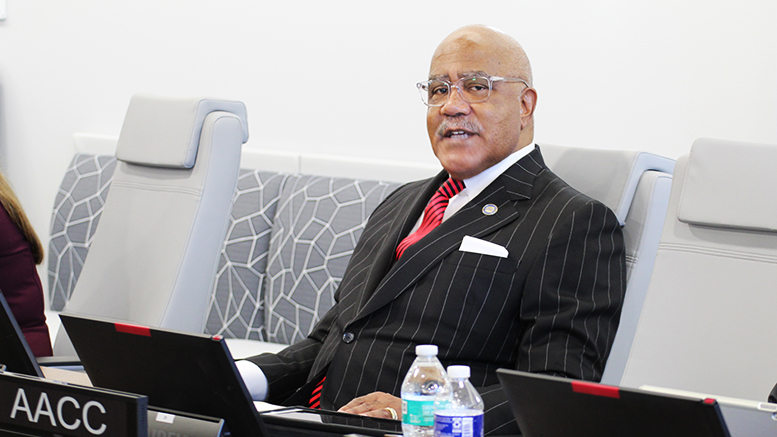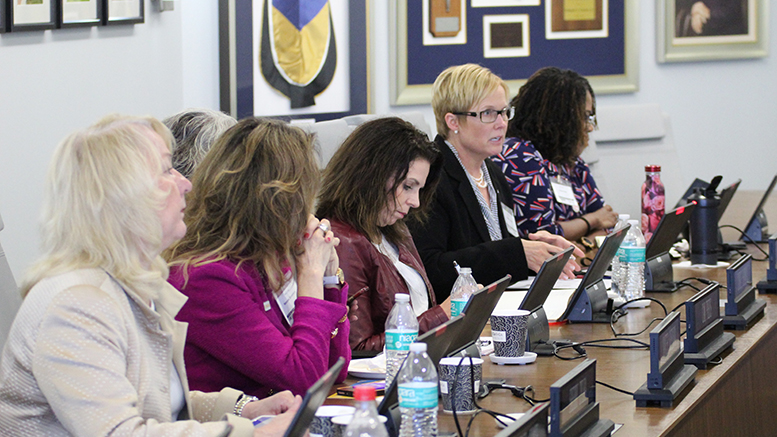The changing composition of U.S. communities, from demographics to economics, is prompting many community colleges to reflect on how well their efforts to improve student success are working.
A group of community college leaders on Friday met at the offices of the American Association of Community Colleges (AACC) to discuss their challenges related to equity and to share ideas on how to address them. It was the final meeting in a series hosted by AACC called Unfinished Business that examined why some student populations are not attaining the same academic and economic successes as other student groups, and what colleges and communities can do to help them.
Many communities that not too long ago relied on industries such as manufacturing, farming, fishing and coal-mining, to name a few, are struggling as those industries have either moved on or cannot find enough workers, the leaders said. Cities that once were wealthy are now among the poorest. Towns that were at one time all white now are minority majority. All these changes have presented community colleges with challenges on how best to serve their communities.
As the college leaders discussed their unique and common hurdles in regards to equity, they noted that all efforts to address these changes have to be “intentional,” from intentionally hiring individuals who reflect their students, to intentionally gathering data on students and local jobs, to dropping some programs that don’t lead to family-sustaining wages.

AACC President and CEO Walter Bumphus moderated Friday’s discussion around Unfinished Business. (More photos)
But it’s not always easy for colleges to change gears and to look at things from a different lens. AACC President and CEO Walter Bumphus said that it wasn’t so long ago that colleges used their enrollment numbers as the main indicator of their success. And some of the challenges two-year colleges face are familiar ones, such as developmental education and transferring.
“We’ve struggled with those two forever,” Bumphus said.
Challenges resulting from enrollment slumps
Friday’s meeting included discussions about colleges’ challenges and shared efforts to improve equity, which ranged from working with local transit companies to offer students free public transportation, to holding meet-and-greets with presidents outside their offices, which provide an informal environment for students to interact with college leaders. Other colleges have opened healthcare clinics on campus to serve students, staff and the community, and the number of campuses offering food pantries continues to grow.
The leaders, who comprised mostly college presidents from rural and suburban areas, also addressed enrollments, noting that enrollment challenges among public and private four-year colleges are starting to affect community colleges. For example, a growing number of four-year institutions are offering dual enrollment, lowering their entrance requirements and adding short-term training programs. Community college leaders are concerned that these approaches will attract students who would historically attend a community college. Some of these students will not be ready for a four-year environment, and will struggle and possibly fail, they said.
Instead of competing with each other, the leaders at Friday’s meeting said a better approach is for two- and four-year colleges to work together on issues such as transferring, which continues to be an obstacle for many community college students. Transferring also is an equity issue, as white students transfer at higher rates than minorities. The partnerships could explore what is causing that and how to improve those numbers. For example, the partnering colleges could develop better transfer pathways that could especially help students who might face hardships in adapting to a university setting.
What’s next
Friday’s meeting concluded the Unfinished Business meetings this year. The association now will draft a synopsis of the meetings and develop recommendations that it will release next year. AACC also plans to release in 2020 a status report that looks at how the sector has done in implementing the recommendations of AACC’s perennial report of the 21st-Century Commission on the Future of Community Colleges and its implementation guide, which set ambitious goals for community colleges for the coming decade, such as increasing student graduation rates by 50 percent by 2020.

